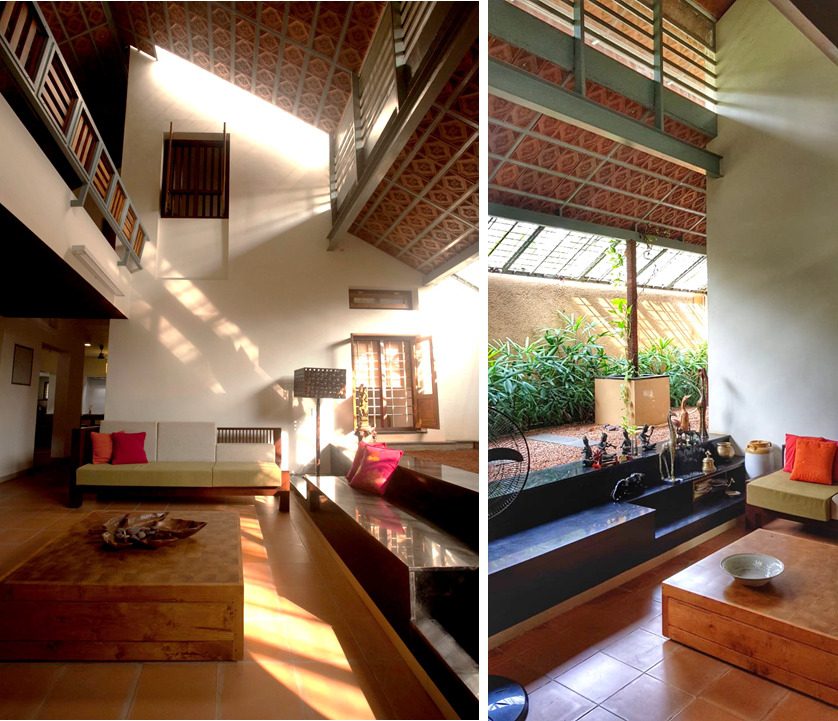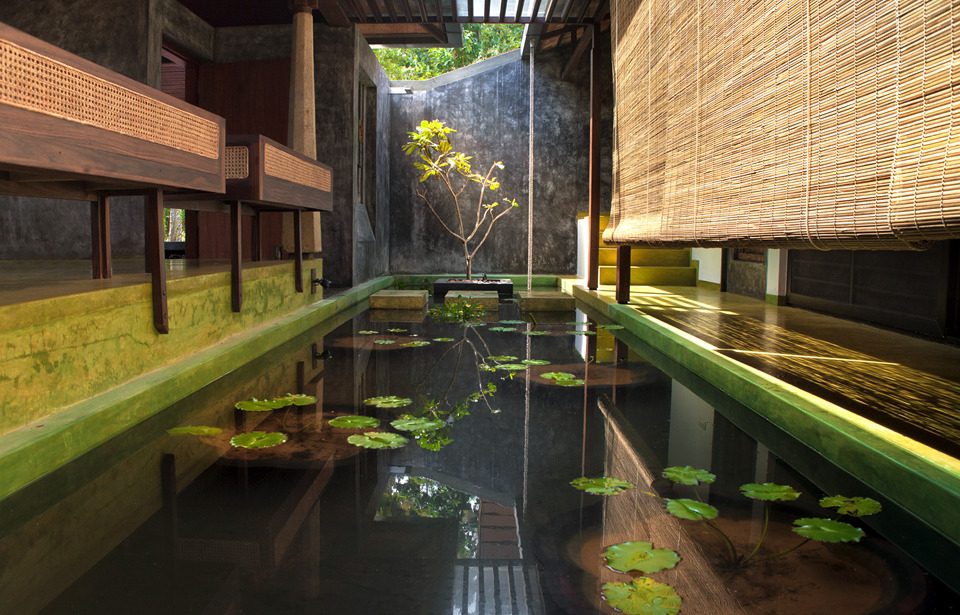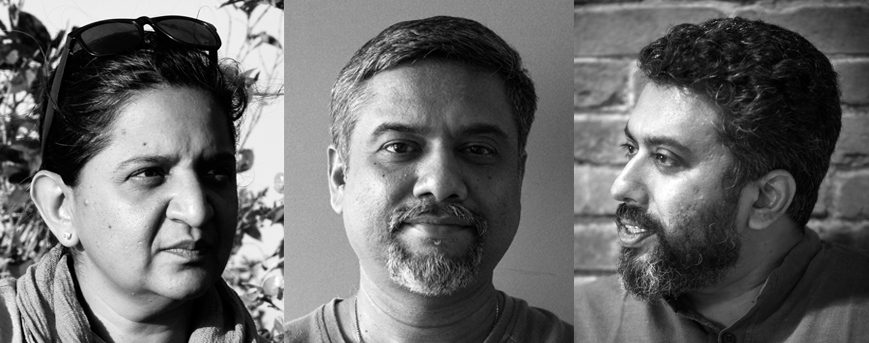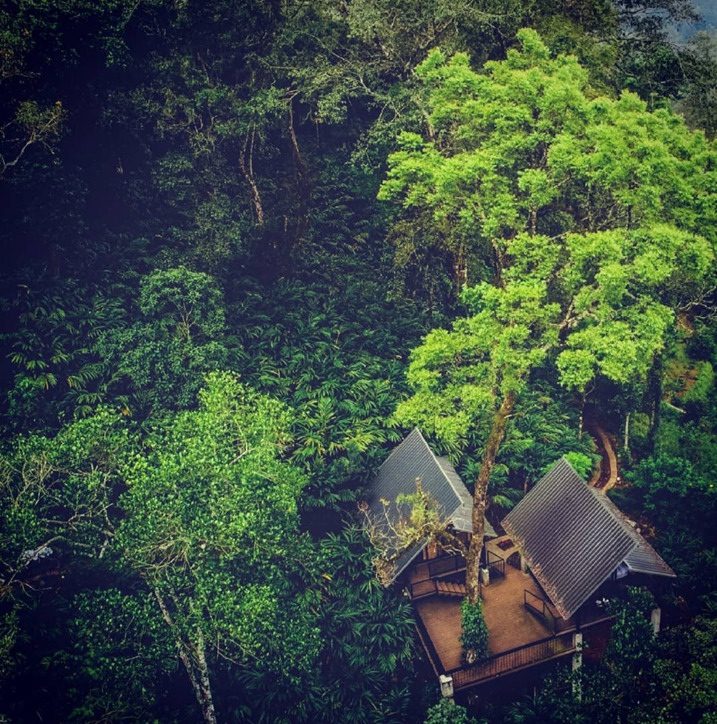Seed of Passion
Rajasekharan C Menon, Founding Partner at RGB Architecture Studio and Academic Chair at seed, the APJ Abdul Kalam School of Environmental Design, shares with SCALE his career path and convictions. He tells us about his practice that celebrates subtle nuances in design and finally his new interest, germinating seeds of perceptive architecture practice through pedagogy.
Rajasekharan Menon, or Raj as he likes to be known, rarely does anything halfway. He either invests his entirety into the project he is convinced about or steers clear of it. Be it as the Academic Chair at seed, a school that strives to create an environment conducive for original design or the work he and his partners, Kunjan Garg and Niranjan Das Sharma, at RGB Architecture Studio, take up and the dialogues he initiates through #seedialogues bringing in practices that foster trans-disciplinary discourses to inspire students by the varying philosophies in practicing architecture. Or it could be in the way he connects over distance to convince the other of a project, or even of music that he is particularly passionate about at that instance, his spontaneity and enthusiasm are oddly infectious and thus even inspiring.
It was while at his alma mater, CEPT University, that he started living a new life, one of rediscovery having travelled alongside mentors and studio masters and it is from these journeys that he imbibed traits such as reading between the lines which leads to a certain manner of story-making in a project, the build-up of the narrative from multiple references, the need to overcome the framework of a drawing or a script during the execution. “Am forever interested in the unwritten aspects of my art, the space within space,” he says as he and his team of three at RGB Architecture Studio delve into the finer aspects of design as they deliver projects that grow from what they have imagined to a place that’s truly loved by those who use it.
Join us as we find out more about this ardent human being who celebrates his life as an architect.

The Kora House by RGB Architecture Studio is a retirement home for the Koras who returned to their homeland after years of expat life. The form of the house is articulated through a set of interconnected lean-to roofs that assist the sightlines into the foliage.
SCALE: How did you know that you wanted to be an architect? Have you always been sure of your career path?
RAJ: My father had a transferable job and when I was in seventh grade, my family moved to the heart of Ernakulam city where I had an architect, a distant relative of mine as my immediate neighbour. He was then completing his Masters in Planning at the reputed SPA, Delhi. He took a keen interest in my sketching and we used to have lengthy conversations in spite of our age difference and he was the first one who introduced architecture to me. He also insisted that I study outside Kerala. This was not easy those days when there was no internet and awareness in a state which had only two career options for its children. Despite the fact that I enjoyed my family’s support to pursue what I liked, there was hardly any information available in the public sphere. So, I would say that the desire was surely there, but there was no assurance on whether it would materialise. Today, I am glad that I managed to study architecture in such a wonderfully inspiring institution, even more than the fact that am a practicing architect. It is such a multiple skill-building vocation, and one of the few general courses left in this world to study!

The Mani House is a place that became the singular source of nourishment to the family, one that while offering adequate levels of privacy and a sense of security was also the point of inflection between the built and the outside.
SCALE: How has the transition from the wider and open CEPT culture of learning and experimental atmosphere to a perhaps restricted surrounding in your hometown been?
RAJ: Coming from a strong academic atmosphere like CEPT, Kunjan and I felt a deep vacuum during the initial days in Kochi. There were hardly any discussion platforms or scope for serious interaction and the fact that those days Kochi did not have a single school of architecture added to our woes. And the fact that we did not study in the state also meant that the fraternity was largely unfamiliar to us. Slowly, we started making friends and meeting over weekends until the point where the new IIA Kochi Chairman Ar L Gopakumar offered a space for us to create a new Design Talk series for the community. The 2011 Design Talks series was a major success, almost unprecedented in the city’s history. These talks happened every month for an entire year and we even managed to rope in some important International names during the last episodes. The series also gained ground because, in those days, there was a similar explosion of energy happening in Trivandrum, Thrissur, and Calicut driven by our contemporaries who were all striving to create a new space of exchange. In 2014, both of us were also asked to curate the Theme lectures for the Young Architects’ Festival hosted by Kochi Centre which was the first time that we shifted focus towards exposing the youth to a new breed of practices happening across the world: that of spatial agency. There were serious questions being asked about the form of practice. I had actually written down what may now be seen as a rudimentary architectural manifesto for monsoon regions of the world in 2010. And in 2015, having been nominated as a Joint Secretary of the Kochi Centre, I decided to pursue this on a much wider canvas. With strong support from my Chairman and other colleagues in the Committee, we conceived a 2-year long programme titled ‘Living Monsoon’ and it went on to become the best programme by a Chapter at the National level. This was perhaps the first serious attempt by any Centre to run the entire 2-year tenure on the back of a robust theme, which was valid for the milieu and its people. In a lot of ways, seed for me is in continuum with the ‘Living Monsoon’. I have realized that it has enough richness to last my entire life and career.
SCALE: Tell us the story of the formation of your design firm? How have you distributed the work amongst the principals? How do you work as a team? Do you work on every project, collaboratively, or do you divide the projects between yourselves?
RAJ: RGB resulted out of an amalgamation of two firms with similar intent and concerns. It was a rare case of cell fusion in an egocentric world of design practice where the more familiar story is of a splintering into smaller entities. All three of us felt that there was tremendous goodwill in this move of coming together and we trusted our instincts. Curiously enough, all three components are vastly different – in their skills, thought processes, and even cultural/ geographic origins. Yet, there exists a wide plateau of agreements and consensus. It is a clear-cut case where coming together of the various parts, gives rise to a completely new entity. The whole is greater than the sum of parts. Essentially, there are three firms within one, and each with accountability to its own. The principals sit around a single table and design hurdles are resolved together should someone solicit it. Although the usual practice is of one principal per project as the team leader there have also been cases where the conceptualisation, design development, and execution were done by different people. Niranjan is a wonderful human being and a brilliant designer. He works within me to transition from the diagram to the material. His sense of finesse is contagious. Kunjan is one of the most logical people I have met in life. She can swiftly translate my random eccentricities and a mad doodle to a Grid. This can happen only when there is bonhomie. It is a space of exchange, negotiations, and enrichment. Division of labour is organic and voluntary. This ambiance effortlessly spreads into the office space. RGB fosters intense and lasting relationships and each and every member has a role to play in setting this space up, down to the last intern. If anything, the firm has taught me that the ecosystem is most important than anything else.

A private residence project in Raj’s native village of Chendamangalam, Parur. It was one of the first projects for RGB Architectural Studio that Raj describes as “frugal, grounded and affable”.
SCALE: RGB Architecture Studio was more interested in small-scale projects that you could focus on in-depth and give enough of your time to its design. Has this vision for the firm proven to be difficult as you gained experience and completed many projects or were you convinced of this philosophy as RGB grew as a firm?
RAJ: More than the scale of projects, I am interested in the scale of approach. No matter what the size and typology, architects need to address the space within space – the subtle nuances of a project at hand. More often than not, practice corrupts, and absolutely so. The longer one practices, the greater the chances of the firm having developed stencils and templates based on how a certain model has performed in a real-world scenario. This can eventually become a vortex of our thought processes. The law of statistics then begins to take over and even ideation becomes mechanical. Often this is also inseparably linked to the size of the office. The bigger the firm, the greater the chances of standardisation in details and drawings to allow for ease of delegation. With smaller crowds, one can manage the variety. At RGB we are always mindful of this lurking danger. We have realised that it is important to defer the architectural solution to a point where the Principals have experienced rigour in the process. This has been true for the most economical house we have made so far – the Cabin House of 1 lakh for flood victims in Idukki as well as for the largest institutional project we have landed to date. So, to answer the question, yes, it is difficult but we are also increasingly convinced of this approach.

The Cabin House for flood victims in Idukki. One of the most economically viable projects completed by RGB Architects.
SCALE: One of the first projects completed by RGB architects that made an impact with its design? Other challenging projects that kept you on your toes?
RAJ: A private residence project in my native village of Chendamangalam, Parur. It was important for multiple reasons. To begin with, it was our first real break almost a decade into having started practice. We were beginning to lose hope by then. Let alone monetary stability, the practice did not even have any serious visibility until that point. As a work, this house demonstrated a lot of our core values. It was frugal, grounded, and affable. Perhaps the most interesting thing about the house was that it was started by someone else and we were roped into it after the plinth was complete. We rigorously employed multiple new sections to the existing plan to rapidly transform the architectural experience. There were tremendous learnings from this project and it brought us much-needed applause in the form of awards and recognitions.

The Art and Life Museum Project at Ponneri, conceived by Murali Cheeroth, is an ongoing project that has been paused due to the pandemic. One of the most challenging projects according to the architects due to the “rigorous process which was non-linear and intuitive and sensorial.”
 Perhaps the most challenging project so far in our career has been the Art and Life Museum Project at Ponneri. Conceived by Murali Cheeroth, a renowned visual artist who has been a long-time friend and mentor to myself and Kunjan, the project demanded a rigorous process that was non-linear and mostly intuitive, and sensorial. Everything from the interpretation of the programme brief to learnings from the building traditions of Tamil Nadu through group travels to enriching client presentations which were largely academic in nature, we were truly living our student days and rigors of the Studio process. The pandemic has paused this project for the time being, but this will remain as one of our most ambitious projects ever, both in scale and in vision.
Perhaps the most challenging project so far in our career has been the Art and Life Museum Project at Ponneri. Conceived by Murali Cheeroth, a renowned visual artist who has been a long-time friend and mentor to myself and Kunjan, the project demanded a rigorous process that was non-linear and mostly intuitive, and sensorial. Everything from the interpretation of the programme brief to learnings from the building traditions of Tamil Nadu through group travels to enriching client presentations which were largely academic in nature, we were truly living our student days and rigors of the Studio process. The pandemic has paused this project for the time being, but this will remain as one of our most ambitious projects ever, both in scale and in vision.
The 1 lakh Cabin House prototype for the flood-ravaged communities of Idukki, the Sultanpur art residency project, sculptor Valsan Kolleri’s residency project at Pattiam near Thalassery, the Ente Bhoomi Green Mall at Kochi are all projects we are passionate about. Unfortunately, many of them are still unbuilt.
SCALE: Now, when you find yourself actively and passionately engaged in the field of teaching, what is it about the profession that makes you so engaged? Is it being in touch with the new generation that kindles your passion? What are your dreams for SEED?
RAJ: When I was offered a position at this young school, there were a lot of factors that excited me and thankfully they have stayed intact over the past year. First on the list, was the possibility of being in the midst of a lot of brilliant people. I have always had reasonably good instincts with people. This is not to claim that mistakes don’t happen, they have. But I keep looking out for extraordinary minds and fresh thinkers. People who want to excel and innovate. One of my fundamental beliefs about civilisations is that innovators have always been individuals. That is the first spark. And when the ideation is molecular, and organically borne out of necessities of the community, the collective takes over and joins hands to see it bear fruit. This has been the story. That movement is what we call synergy. To me, therefore, every institution is about the balance of this individual brilliance and collective energy. Doshi conceived CEPT. But it could be set in motion only by a multi-nuclei entity that was full of great thinkers with a healthy competition amongst them to excel. This synergy is contagious. Students can sense it.
The bowl is overflowing with dreams. I am a bit restless with the project simply because there is so much to do within a very short span of time. The possibilities are infinite.
It is the mandate that is on offer that makes it very fascinating as an engagement. I do not teach at Seed. It’s a policy writer’s job and is therefore inherently political as a position.

Raj and Kunjan with SEED Academic Chair, Dr. A. Srivathsan, and Dean and Director, Sebastian Jose along with other faculty members.
SMALL TALK
1. Architects who have Influenced you during your CEPT days and architects who influence you now.
Laurie Baker, Kurula Varkey, Anant Raje and Leo Pereira.
Andra Matin, John Lin, Rem Koolhaas.
2 How has the pandemic affected you? If at all it has?
I visited Seed for the first time during the week that preceded the total lockdown. Everything around me was slowing down and it gave me loads of time to introspect and redirect my focus from practice to academics. But I also lost my father during the same period. It was a simultaneity of mourning and celebration. A phase that will be deeply etched in my memory.
3. One artist that you listen to, when you feel particularly bogged down?
Kumar Gandharva, Rohail Hyatt, M B Sreenivasan
4. Projects that you wish you had been part of.
There are many in fact. But honestly, I would think of one of the stepwells in Gujarat. I find their anonymous authorship and sense of collaboration to be an amazing lesson for the present times.
5. If not an architect, what would you be?
A musician or an Indian Politician. I have a lot of admiration for both.









